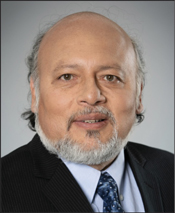Frontiers in PNM
By Alberto Campos
Cable has enjoyed advances in HFC network troubleshooting leveraging proactive network maintenance tools. PNM uses the intelligence of transport devices like the cable modem (CM) and the cable modem termination system (CMTS) for network maintenance purposes. These tools allow operators to detect and localize impairments by correlating impairment signatures, noise and error statistics with network topology information. Even though these are powerful tools, there is much more that can be done to enhance our insight into the health and performance of the services delivered through cable networks.
The segmentation of cable networks into smaller RF serving areas through the evolution to fiber deeper architectures not only improves the overall SNR — leading to greater resolution in determining plant conditions — but also simplifies the isolation and localization of impairments.
The bidirectionality achieved through full duplex (FDX) DOCSIS® systems brings to light impairments that were previously hidden by not having upstream and downstream on the same spectrum. The echo cancellation that takes place within FDX DOCSIS nodes as well as the assessment of isolation between CMs will provide valuable troubleshooting information.
Cable has not only expanded capacity through fiber node segmentation and the efficiencies achieved with higher order modulation formats, it also has augmented capacity by extending the usable RF spectrum. The DOCSIS 3.1 specification has a 1.8 GHz maximum downstream frequency option and 3 GHz transport is in cable’s future. As cable uses higher frequencies, network elements’ problems that were only observed under faulty conditions become noticeable throughout the network. Return loss and isolation of cable’s components substantially decreases at higher frequencies generating distortions. As cable tightens impairment thresholds across a wider frequency span, its workforce will have to repair more impairments that will have become noticeable.
PNM has focused on cable’s coaxial portion of the network with an underlying driver of improving subscribers’ service experience. In order to address quality of service experience, operators need to have insight into the end-to-end connection path needed in service delivery. That is across all the networks the service traverses, including the coaxial, optical, wireless and aggregation networks and across all layers including physical, link, IP and application layers. Data correlation of these independently managed networks will provide insight to end-to-end services, while introducing historical data of network health will enable the assessment of reliability and service availability.
This level of data granularity across all networks and the need for long term record keeping results in vast amounts of data to analyze, correlate and manipulate. No longer can cable rely on manual intervention when troubleshooting network impairments. Automated analysis and the effective use of artificial intelligence is needed for the identification, localization and diagnosis of impairments at scale.
Evolution towards distributed access architectures (DAAs) prompted the use of coherent optics to backhaul capacity from large numbers of remote PHY devices, small cells and businesses within an original fiber node. Coherent optics enable rich intelligence through the numerous digital signal processes that take place within coherent transceivers. Many of the same PNM processes that the industry leveraged in the RF domain can be applied to the optical domain due to the coherent nature of both RF and coherent optical signals.
Coherent signals’ performance monitoring and analytics not only provide health information of the coherent signal and the fiber paths transporting it, but indirectly provide health information of non-coherent optical signals, such as intensity modulation and direct detection (IM-DD) and analog optical signals that share the same fiber segments for the coexistence transmission scenarios.
Coherent optics’ high spectral efficiency along with automated wavelength manipulation provide means for managing and recovering unused wavelengths and increasing the lifespan of our optical networks. Cable enjoys a multitude of options that enable effective tools to tackle the management and maintenance challenges of its evolved networks.
 Dr. Alberto Campos
Dr. Alberto Campos
Fellow, CableLabs®
Dr. Campos has over 30 years of experience in cable, DSL, wireless, and optical communications. He is a prolific author, with over 30 patents granted, holding BSEE, MSEE, and Ph.D. degrees from Northeastern University. Alberto joined CableLabs in 2002, where he conducted seminal work in proactive network maintenance, DOCSIS® specifications, and coherent optics. Alberto gained the distinction of being CableLabs’ first Fellow in 2017. Alberto’s coherent optics work has served as catalyst to numerous innovations.

